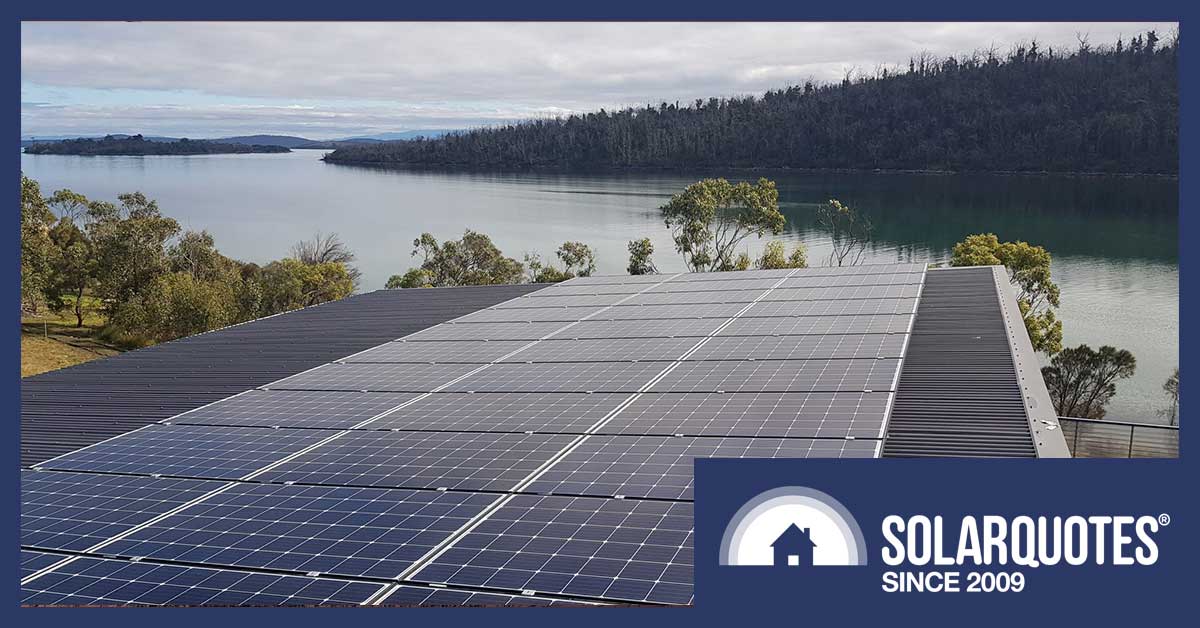
A solar power system in Tasmania. Pic: Scott Logie
If you are lucky enough to live in Tasmania, I have some bad news:
Using solar panels to get low bills is more challenging than on the mainland.
But I also bring good news:
Despite drawbacks, rooftop solar power – done right – can still be an excellent investment for Tasmanians and pay for itself within 5 years on an unshaded roof.
The Apple Isle even has some advantages, such as the best solar inspection regime in the country. A regime I wish the Mainlanders would copy.
In this comprehensive article, I’ll cover everything I think you need to know about going solar in Tasmania including:
- Challenges faced by Tasmanian solar
- Advantages enjoyed by Tasmanian solar
- The electricity retailer offering the highest solar feed-in tariff in Tasmania
- The Tasmanian electricity tariff that is usually best for solar households.
- How to maximize savings by increasing solar self-consumption in the Tassie climate.
- A quick overview of the most energy-efficient ways to heat water and homes — because this is such a large part of Tasmanian electricity consumption.
- Why solar panels still make good financial sense even in Australia’s least sunny state.
I hope the research I’ve done will be of use to people on the south side of the Bass Strait who are considering getting solar solar panels. I’m pretty sure it will help. After all, as any Tasmanian can tell you, two heads are better than one.
Tasmania Solar — The Pros and Cons
I’ll get the bad news out of the way and start with the drawbacks of installing solar in Tasmania. These include:
- The least sunshine and lowest solar output of any state.
- Low winter output.
- Solar receives fewer STCs that lower its cost than the mainland average.
- Even after allowing for fewer STCs, the average cost of solar is higher than on the mainland.
- Extra freight costs and delays. Especially with batteries that have been known to sit at Melbourne wharf for weeks.
I’ll also go into Tasmanian solar’s advantages:
- While not a big advantage, east-facing solar panels have a slightly higher output than west-facing ones which makes them handy for heating homes on cold mornings after sunrise.
- Tasmanians can install larger solar systems than most mainlanders (10 kW inverter size limit per electrical phase), and export all the solar energy that they produce for a feed-in tariff.
- Tasmanian solar self-consumption is the highest in the country. This helps improve the return from solar and is due to a combination of high electricity use and cloudy skies.
- Compulsory inspections of new solar PV systems mean recent Tasmanian solar installations are generally high quality.
Lowest Solar Output In Australia
Tasmania has the lowest overall solar output of all the states. Compared to otherwise identical solar systems, one installed in Hobart will produce…
- 18% less than in Brisbane
- 11% less than in Sydney
- 10% less than in Melbourne (The usual Australian go-to location for jokes about bad weather.)
One kilowatt of unshaded north-facing solar panels on a Hobart roof will conservatively generate at least 1,240 kilowatt-hours a year. For various system sizes, with very conservative assumptions annual output comes to…
- 4 kilowatt solar power system: 3,720 kilowatt-hours
- 5 kilowatt solar power system: 6,205 kilowatt-hours
- 6.6 kilowatt solar power system: 8,190 kilowatt-hours
- 10 kilowatt solar power system: 12,410 kilowatt-hour
- 13 kilowatt solar power system: 16,130 kilowatt-hours
On the — literal — bright side, that’s still better than Southern Italy which is considered sunny by European standards. Hobart rooftop solar will produce 6% more than an identical system in the Sicilian city of Syracuse. (Identical except for the fact it faces south instead of north.)
Fortunately, Hobart is the absolute worst of the Tassie major population centres. If you live in Northern Tasmania, say Launceston, output will be around the same as in Melbourne.
Low Winter Energy Output
One disadvantage of Tasmanian solar is low winter energy output. Here’s a conservative daily average for kilowatt-hours generated by a north-facing, 6.6 kilowatt, Hobart system:
In June — a month where clouds cover the sun in Hobart 51% of the time — average solar output is one-third the amount in December and January. Those are very inconsiderate clouds, as winter is when Tasmanians use the most electricity.
High Winter Electricity Consumption
This graphic from the Australian Government’s Energy Made Easy site shows the average seasonal consumption for a three-person Hobart household that does not have underfloor heating:
This means the average three-person Hobart household will use 12 kilowatt-hours a day more in winter than in summer. We can be confident almost all that extra electricity goes towards home heating and hot water systems. The extra lighting required because of shorter winter days doesn’t add up to a lot of extra energy.
But this is an average. A considerable number of people use natural gas or wood to heat their homes, so households that only use electricity for heat are likely to consume even more in winter.
Lower ‘Solar Rebate’ — Fewer STCs
When rooftop solar is installed it receives STCs that lower its cost. (This is often referred to as the “solar rebate“.) But Tasmanians get fewer STCs than most mainlanders. This is because Australia is divided into zones with sunnier areas receiving more STCs:
Tasmania is part of Zone 4, which is the worst zone of all. They share it with most Victorians and a small number of West Australians. Solar in this area receives 14% fewer STCs than in Zone 3 where the majority of Australians live.
At the moment, in 2021, a Tasmanian installing a 10 kilowatt solar power system will receive 118 STCs. They are currently worth $38.70 each, but administrative costs take a nibble and $35 is probably a better figure to use. Using a value of $35 they reduce the cost of solar systems by these amounts…
- 6.6 kilowatts — $2,730 reduction
- 10 kilowatts — $4,130 reduction
- 13 kilowatts — $5,390 reduction
When you get a quote for solar the value of the STCs will be included in the final price. There’s no need to do anything special to claim them.
The amount of STCs received will fall by about 10% at the start of 2022 as they are slowly being phased out. All else equal, this would increase the total cost of a Tasmanian solar power system by around 4%. As the cost of solar normally falls by more than that over a year, there’s no rush to get a solar power system before the STC amount is reduced at the end of the year. On the other hand, there’s no point in waiting because you will miss out on the savings it could be providing now.
Higher Solar Prices
Tasmanians pay higher average prices for solar than in the mainland states.1 The main reasons why are:
- Fewer STCs are provided.
- It’s a small market.
- The tyranny of distance — While Tasmania isn’t that far from the rest of Australia, the water gap combined with a small population still adds to costs.
But there is one good reason why Tasmanians pay more than the rest of the country and it is:
- Average solar installation quality is the highest in the country thanks to a robust 100% inspection regime run by the relevant, local regulator – the Department of Justice.
So although solar in the Apple Isle costs more than the mainland average and produces less energy, you can be more confident of getting a good quality system.
East Orientation Better Than West
North-facing panels normally generate the most energy overall, but thanks to Hobart afternoons averaging a little cloudier than mornings, output can be boosted a whole 1% by facing them 20 degrees to the east in a north-north-east direction:
If you already have north-facing panels, that tiny improvement is not worth rotating your house 20 degrees. But because many homes will have a choice between facing panels towards either the east or west, it’s important to note there is a significant difference in output between the two. As a percentage of the output of panels facing directly north, in Hobart ones facing east and west will produce:
- Directly east — 90%
- Directly west — 80%
The considerable difference holds for the whole of Tasmania. In Launceston it is:
- Directly east — 90%
- Directly west — 82%
With a typical Tasmanian roof slope of 22.5 degrees, west-facing panels will produce moderately more power in the afternoon than morning, while it’s the other way around for east-facing panels.
What is best will depend on household or business electricity consumption patterns, but generally, in Tasmania, it’s better to have panels facing east rather than west. This is not just because the total output is higher, but because it’s useful for heating homes and businesses on cold mornings. With an average January high temperature of only 22.7 degrees in Hobart, there is far less demand for afternoon air conditioning than on the mainland.
South Facing Solar Panels
Because Tasmania is the last Australian stop before Antarctica, south-facing panels perform worse than on the mainland and annually only provide two-thirds as much energy as north-facing ones. On top of this, they produce very little output in winter. For panels on a roof with a typical Tasmanian slope of 22.5 degrees, their average daily output in June will only be 9% of their January daily average.
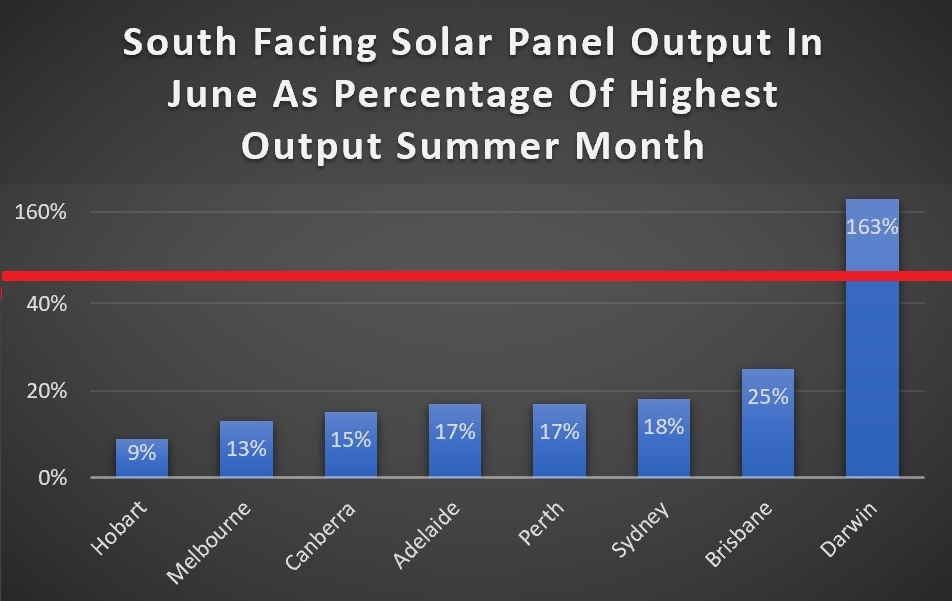
Results are for panels at a typical Tasmanian roof slope of 22.5 degrees and have been adjusted to account for December and January having one more day than June.
Despite these drawbacks, it’s still possible for south-facing panels to pay for themselves. But the homeowner will need to be satisfied with them taking a lot longer to reach the breakeven point.
Tasmanian Tilt Frames Are Expensive
If you want to face your panels in a different direction to your roof, you’ll need tilt frames. However, tilting panels is an option that will cost more than on the mainland. That’s because Tasmanian regulations require signoff from an engineer and council approval.
Systems & Solar Exports Can Be Large
Most Tasmanian homes have single-phase power, but an increasing number have heftier three-phase power. The maximum amount of solar each can normally install is:
- Single-phase power — 10 kilowatt inverter and up to 13.33 kilowatts of solar panels
- Three-phase power — 30 kilowatt inverter and up to 40 kilowatts of solar panels2
Tasmanians are allowed to export up to 10 kilowatts per phase, which is twice as much as in most locations on the mainland. This means solar inverters are normally not required to be export limited. While export limiting is not as bad as some people think, it’s still good that Tasmanians don’t have to worry about it because it does have the potential to cause clean solar energy to go to waste and reduce the feed-in tariff received.
Big Systems Need Big Roofs
If you have three-phase power and want to install 40 kilowatts of solar panels on a normal-sized roof I’m afraid you’re out of luck. It’s not going to fit. Even 10 kilowatts is difficult to fit on many roofs. The good news is, thanks to increasing panel capacity, a 10 kilowatt system these days can only require 27 panels. The number can even be less if you’re willing to shell out for the highest efficiency panels available.
Really Big Systems Need Engineering Certification
If the solar panels cover an area greater than 38 square metres on any one roofing structure, then council approval and engineering certification are required.
Expect this to add $700-$1200. The extra costs can be frustrating but this also helps keep Tasmania’s reputation for the best quality installations in the country.
Solar Exports May Be Restricted
While it’s not common in Tasmania, it is possible for new solar systems to be limited in how much much power they can export due to local grid limitations. Sometimes they will be limited to slightly less than normal, while in a worst-case situation, a property can be zero export limited. If this happens, your installer will let you know in advance and you can decide whether or not to go ahead.
Fortunately, Tasmania has very little in the way of Single-Wire Earth Return (SWER) transmission lines that are common in rural areas on the unfashionable Northern Isle and which often can only accept a limited amount of solar exports. If you are on a SWER line in Tasmania, then you’ve been very unlucky or — more likely — you live in the middle of nowhere.3
High Solar Energy Self Consumption
The more solar energy a home consumes itself, the better the return on the system4. This is because the cost of grid electricity is higher than the feed-in tariff received for sending electricity into the grid. Due to a combination of low solar output and high electricity use, the typical Tasmanian home has the highest self-consumption in Australia.
According to Solar Analytics, the solar energy self-consumption percentages for homes with 6.6 kilowatt solar systems in state and territory capitals are…
- Hobart 30%
- Melbourne 28%
- Darwin 25%
- Perth 23%
- Canberra 22%
- Adelaide 21%
- Brisbane 20%
- Sydney 20%
As you can see, Hobart is at the top of the list. This is due to a combination of high average electricity consumption (due to reverse cycle air conditioning being the most popular form of heating and cooling) and lower than average solar output.
For different sized systems in Hobart, the self consumption percentages are:
- 4 kilowatts 49%
- 5 kilowatts 39%
- 6 kilowatts 30%
- 6.6 kilowatts 30%
- 8 kilowatts 25%
- 10 kilowatts 20%
- 13 kilowatts 15%
Note these percentages are what homes with these size systems currently self consume. Households with high electricity consumption are more likely to install large solar systems, so if your electricity consumption is average and you install a 13 kilowatt system your self-consumption figure may not be as high.
TAS Solar Is High Quality
Tasmanians pay more for solar than most Australians, but the upside is the average quality of solar installations is the highest in the country. This is because every solar installation receives an independent inspection. While Victoria also has compulsory inspections, they are not fully independent (the installer can choose his own inspector!) and so not as effective.
The drawback is inspections bump up the cost of solar5. But a robust, independent inspection system is definitely a good thing to have.
Tasmania Now Has Retailer Choice
For a long time, Aurora Energy was the only retailer in Tasmania. In February 2019 a second retailer, 1st Energy, was allowed to operate. As far as I can tell, Tasmania now has four different retailers. The different retailers and the solar feed-in tariff they offer are:
- Aurora Energy 8.47 cent feed-in tariff
- 1st Energy 13.47 cent feed-in tariff (1st Solar Bonus Plan)
- Energy Locals 8.5 cent feed-in tariff
- Future X Power: 8.47 cent feed-in tariff
First Energy’s solar feed-in tariff is clearly the best at 5 cents higher than the rest:
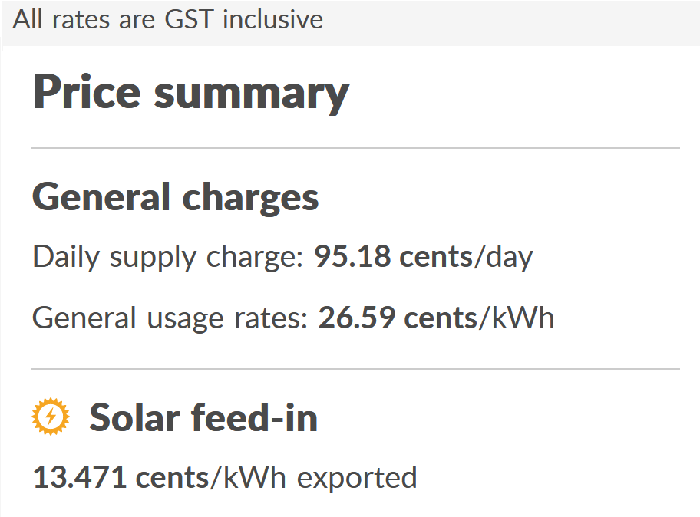
Price summary of 1st Energy’s Tariff 31 plan. (Image: Energy Made Easy)
Their considerably higher feed-in tariff means 1st Energy is the best choice for almost all solar households. If your solar exports are unusually low it’s possible you’ll be better off with a different plan, but in most cases, there’s no financial incentive to go with a different electricity retailer. If you think 1st Energy’s customer service is bad or if they picked on you in school, you may not want to go with them — but if your goal is to low electricity bills it’s likely to be the best option.
Feed-In Tariff May Fall
Because average wholesale electricity prices have fallen, Tasmanian feed-in tariffs may also fall on the first of July. But, because wholesale electricity prices have not fallen by much this financial year, the feed-in tariff fall should only be roughly one cent. The general trend in the future is for lower feed-in tariffs, but they may increase over the next couple of years if the world economy has a post-pandemic recovery.
Tasmanian Electricity Tariffs
While deciding which retailer to go with isn’t difficult, solar households will also need to decide which electricity tariff to use. At the moment the majority of Tasmanian households have two tariffs:
- Tariff 31: Light and Power — This supplies general household electricity use.
- Tariff 41: Heating and Hot Water — This can only be used to supply hot water systems, heat pumps, and some hardwired electrical resistance heating systems.
There is also an off-peak controlled load that supplies power to specific devices for part of the day.
- Tariff 62: Supplied for a minimum of 9 hours at night and 2 hours in the afternoon only to hot water systems, heat pumps, and some hardwired electrical resistance heating systems.
If a home has a smart meter then, instead of the above tariffs, they can use Tariff 93 which is time-of-use:
- Tariff 93: Peak rate on weekdays from 7-10 am and 4-9 pm and off-peak all other times.
Which tariff will save the most money will depend on:
- Your electricity consumption patterns.
- The size of your solar power system, and…
- What steps, if any, are taken to shift electricity consumption out of peak periods if on time-of-use Tariff 93.
While some solar households may benefit from using Tariff 31, for the majority time-of-use Tariff 93 is likely to be best.
Solar Only Offsets One Tariff
When solar is installed and time-of-use Tariff 93 is used, the home will use solar energy first and will only consume grid electricity if there isn’t enough solar output available. But if the home decides to use tariff 31 and 41 then the solar inverter can only offset power consumption for one of those tariffs. Normally, it will be used to offset tariff 31, as people are more likely to use tariff 41 in the early morning or at night when solar output is either low or non-existent.
This means if a home’s solar system is producing 4 kilowatts when the home is using one kilowatt to power appliances and the electric hot water system is drawing two kilowatts then…
- On time-of-use Tariff 93 the home will be importing 0 kilowatts from the grid and exporting one kilowatt for a feed-in tariff.
- On Tariffs 31 & 41 with solar offsetting Tariff 31 the home will be importing 2 kilowatts from the grid to power the hot water system on Tariff 41 and exporting 3 kilowatts for a feed-in tariff.
If a home has multiple solar inverters then they can be used off set consumption for different tariffs. For example, if a had two solar inverters one could offset consumption on Tariff 31 and the could offset Tariff 41.
Update 12:30 10th April 2020: I misunderstood how tariffs and solar worked in Tasmania and originally wrote that when households has solar installed they could only have one tariff. This is not correct. While homes will normally be put on the time-of-use Tariff 93 by default when solar is installed they can change back to having both tariff 31 and 41 if they wish. Thanks to Lindsay in the comments for pointing this out.
Tariff 31 & 93 Comparison
I’ve put a table below showing the daily supply charges and per kilowatt-hour charges for Tariff 31 & 41 and time-of-use Tariff 93. It’s from an Aurora Energy brochure, but you’ll be charged the same if you use 1st Energy to take advantage of their higher feed-in tariff. All prices include GST and times are always AEST, so do not change with daylight savings:
To sum up the differences, on time-of-use tariff 93 a household will pay…
- 10.6 cents more daily supply charge which comes to an extra $39 a year.
- 20% more per kilowatt-hour of grid electricity for one-quarter of the hours in a week.
- 44% less per kilowatt-hour of grid electricity for three-quarters of the hours in a week.
This makes Tariff 93 sound pretty good. A home would have to consume more than two-thirds of its electricity during peak periods before it would make sense to change to Tariff 31.
Time-Of-Use Tariff 93 Usually Best For Solar
In the rest of Australia, it’s common for solar households to be better off with a standard tariff than a time-of-use one. This is because they use little grid electricity in the middle of the day when the price is low thanks to solar generation and more in the morning and evening peak periods when solar energy output is low or non-existent. But the situation is different in Tasmania:
- The difference between peak and off-peak rates is 17.2 cents which is less extreme than time-of-use plans on the mainland.
- In Tasmanian winters, solar output is particularly low and electricity consumption high. This means solar homes are more likely to benefit from low grid electricity prices in the middle of the day than would be the case on the mainland.
- In summer in Tasmania, the sun can rise as early as 4.25am AEST (5:25am daylight savings) and set as late as 7:41pm AEST (8:41pm daylight savings), so in this season rooftop solar panels can be more effective at reducing grid consumption during morning and evening peak periods than on the mainland.
Homes that are empty in the middle of the day can use a high enough portion of their grid electricity consumption during peak periods, but often this won’t be enough to make switching to tariff 31 worthwhile. Especially if a modest effort is put into shifting consumption out of peak periods. This can be as simple as putting an appliance on a timer so it switches itself on in the middle of the day. Many appliances come with built-in timers these days — but admittedly even I often don’t know how to set them.
Monitor Consumption Before Deciding
Homes that have solar installed will be put on time-of-use Tariff 93 by default but can switch to Tariff 31 or tariffs 31 & 41 if they request it. Unless you are certain switching back is a better option for you, I suggest staying on the time-of-use tariff and checking electricity bills to get an idea of which is likely to be best. If grid consumption during peak periods is under two-thirds of your total grid electricity use, there’s a good chance you’ll be better off with the time of use tariff. If the result is close, you may need a full year of bills before you can be confident about which is likely to be best. But if it is close, you won’t be losing out on much money by not being on the best tariff, so you can afford to take time to decide.
1st Energy Feed-in Almost Equals Off-Peak
The more electricity consumption is shifted to the daytime, the greater the savings from solar will be. This is because the cost of grid electricity is higher than the feed-in tariff you’ll get if the solar energy is instead sent into the grid. Normally it would make sense to shift electricity use away from cloudy to sunny days when more solar power is available, but if a home is with 1st Energy and on time-of-use Tariff 93, it won’t make much difference.
This is because — at the moment — their solar feed-in tariff is 13.47 cents while the off-peak rate from 10.00 am to 4:00 pm is 14.69 cents, which is only around 1.2 cents higher. So while there is an advantage to using electricity on sunny days, as long as consumption occurs during the off-peak period it won’t make much difference to electricity bills.
Shift Hot Water Heating To The Daytime
Tasmanian households use a lot more hot water than the Australian average. For households on Tariff 31, this makes it important to maximize the solar consumption of electric hot water systems. On time-of-use Tariff 93, it’s important to prevent electric hot water systems from switching on during peak periods.
There are three main ways of doing this:
- Put the hot water system on a timer.
- Install a solar hot water diverter — such as a Catch Power diverter.
- Install a relay — such as a Catch Power relay6.
Homes with high hot water consumption are usually good places to use hot water diverters or relays, but if a home is with 1st Energy and on time-of-use Tariff 93 the solar feed-in tariff will be close to the daytime off-peak rate. This means an easy and low-cost solution is to put the hot water system on a timer so it only switches on during the daytime off-peak period.
Reducing Heating Costs
Electric heating can also be shifted to the daytime. Provided a home is well insulated — which it bloody well should be in Tasmania — it can retain the heat well into the night or at least until after the end of the Tariff 93 evening peak period.
There are two main methods of using electricity for home heating:
- Heat pumps: These are air conditioners and can be used to heat or cool homes.
- Electrical resistance heating: Two common examples are radiant bar heaters and space heaters that blow hot air.
Electrical resistance heating can use more than 4 times as much energy to provide the same amount of heat as an air conditioner. For this reason, electrical resistance heating should be avoided whenever possible, with the only exception being if the area is tiny, such as underneath a Japanese blankie-table.
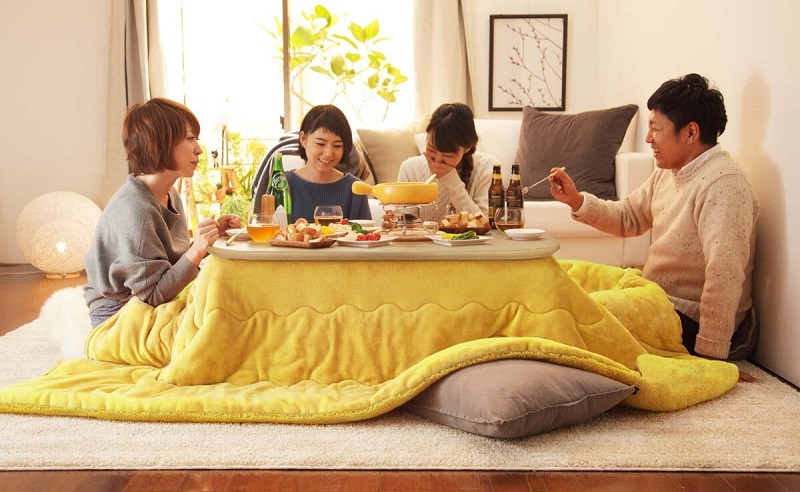
For some reason, the traditional Japanese blankie-table is often called a “kotatsu” in Australia. (Image: Japan Objects)
In practice, having multiple separate air conditioners is normally more energy efficient than one large ducted air conditioner. This is because heat is lost through the ducting and people are much more likely to only warm the rooms they’re using.
Heat pump hot water systems are also available. They greatly reduce the amount of energy needed to heat water but have the drawbacks of being more expensive than conventional electric resistance hot water systems and require more maintenance. If you have a choice between getting a heat pump hot water system or a larger solar system always go for more solar power, as that will give a better financial return while also being better for the environment.
Be Wary Of Underfloor Heating
Underfloor heating is usually the most expensive way — by far — to heat a home. This is because it requires massive blocks of insulation under the floor. Unless this is done properly and expensively, in most locations groundwater will simply wick the heat away.

No, not John Wick the heat away.
This can result in massive electricity bills. So if you get underfloor heating, be prepared to pay through the nose for it.
Electric underfloor heating can use heat pumps or electrical resistance. In my opinion, the first option uses too much energy, while the second uses way too much energy.
If you really want underfloor heating, my advice is only to get it if building a new home and make sure proper underfloor insulation is put in. Don’t retrofit it to an existing house because if you dig deep enough into the foundations to install adequate insulation it will probably fall down. I instead recommend combining air conditioner heating with warm socks.
How Much Does Solar Cost In Tassie?
Asking how much solar costs in Tasmania is like asking, “How much does a car cost in Tasmania”, but as a general rule if you avoid the big cheap companies with TV ads and washed-up sports stars and go with a well-regarded local company, you’ll be approximately looking at the following price ranges for a standard 6.6 kW system.
Note: this does not include site-specific costs such as optimisers, engineering costs, scissor lifts etc.
- Good budget panels with a good budget inverter = $5,500 – $6,500
- Good budget panels with premium inverter = $6,000 – $7,500
- Premium panels with premium inverter = $7,000 – $9,000
- Ultra-premium panels with premium inverter $8,000 – $11,000
If you want to know what brands we consider good budget, premium and ultra-premium these charts for solar panels and solar inverters are for you.
Batteries Don’t Yet Pay
At the moment it doesn’t make financial sense to get a grid-connected home battery in Tasmania. I expect this will change in the future, but it may be a while before they’re cheap enough. Of course, if you aren’t chasing a financial return, you can install a battery now.
Reasons you may want a grid-connected battery in Tasmania include:
- Common blackouts or brownouts (flickering) of power in regional areas
- Back-up power required for fire retardant or health systems (e.g. CPAP machines)
…Unless You Are Going Off-Grid.
It’s becoming more common for Tasmanians (and mainlander tree changers) to buy their dream block ready to build that dream Tasmanian home.
The cost to bring grid power to that remote, dream block with stunning views can be $100,000 or more.
How does that compare with the cost of an off-grid solar system? It depends on what kind of lifestyle you want to live.
But as a rough guide:
- Glorified caravan setup purchased from internet auction site = $10,000 – $15,000
- Cabin sized system with some desire for moderate power usage = $20,000 – $25,000
- A standard system to run an energy-efficient off-grid principled (but still average) home = $30,000 – $40,000
- An “I want my jacuzzi, Sauna and my ducted heating” system = $70,000+
Tassie Solar Can Pay In Under 5 Years
While Tasmania is the state with the least sunshine, grid-connected solar power can still easily pay for itself provided it’s on a roof without significant shading. If I go to the SolarQuotes Solar & Battery Calculator page and enter the following information:
- A Hobart postcode
- A 6.6 kilowatt system size
- North facing solar panels
- A 26 cent cost of electricity
- A 13 cent feed-in tariff
- A $6,600 system cost
Then it will give me an estimate of the simple payback time when using Tariff 31 with 1st Energy. This is how long it will take for the savings on electricity bills to equal the cost of the system.
The answer it gives is 4 years and 7 months. But I will also assume there will be no increase in grid electricity prices and shift the Electricity Price Inflation slider from 3% to 0%. This gives a simple payback estimate of:
- 4 years and 8 months.
As this is under 5 years and the solar power system can be expected to last decades, it’s definitely going to be a worthwhile investment by most people’s standards.
If you are intending to use time-of-use Tariff 93 and expect the average cost of the grid electricity solar output will replace to be 15 cents, then that figure can be entered as the cost of electricity. If I keep the other figures the same it gives a simple payback period of…
- 5 years and 7 months.
That’s still what I would call a good investment. If you don’t think it’s good, please send me some investment tips because I can’t think of anything better7.
Big Solar Can Pay In Tasmania
Because 1st Energy’s solar feed-in tariff is reasonably generous by today’s standards, a large solar system can pay for itself fairly rapidly even with low self-consumption. If I enter the following into our Solar & Battery Calculator:
- A Hobart postcode
- A 10 kilowatt system size
- North-east facing panels (This represents a combination of north and east-facing solar panels.)
- A 15 cent cost of electricity
- A 13 cent feed-in tariff
- A $10,000 system cost
- 10% solar self consumption
- 0% electricity price inflation
Then I get a simple payback period of 5 years and 11 months.
If I want to be cautious and instead use 13 cents for the cost of electricity and a 10 cent feed-in tariff to account for possible future reductions, I get a simple payback period of 7 years and 6 months. That still seems like a very good deal to me, especially since that larger system means I’m ready to install a battery in the future and/or charge one or more electric cars.
So — if you are in Tasmania and own a roof, not only should you consider getting solar panels, you should consider going big, and you should carefully consider which electricity retailer and tariff you move to after the install.
Thank you to the following Tasmanian solar companies for their help with this post: IWantEnergy, HEG Energy, Expert Electrical Tasmania.
Footnotes
- The Northern Territory has the highest prices, but is a territory and not a state. It says so right there in its name. ↩
- Normally panel capacity can only be a maximum of one-third greater than inverter capacity. Provided the inverter manufacturer allows it, it is possible to get around this restriction by installing a battery at the same time as solar, by being off-grid, or by not claiming the STCs that lower the cost of solar. ↩
- On the bright side, the middle of nowhere in Tasmania is sure to be an area of great natural beauty. ↩
- Don’t get carried away with getting the system with the best return. What you actually want is a system that is the best overall investment, which can be different from the one with the best return. ↩
- In my opinion, it’s not necessary for every system to be inspected to ensure quality. For example, if only 50% are checked it halves the cost and it won’t take long for a shonk installing crap systems to be caught. ↩
- It may seem like I am advertising Catch Power here, but the fact is I’m just lazy because we already have convenient articles on them I can link to. ↩
- Not anything legal and I’m getting too old to be breaking the law. Last time I sold the Sydney Harbour Bridge I nearly broke my back hauling it to the scrap metal dealer… ↩

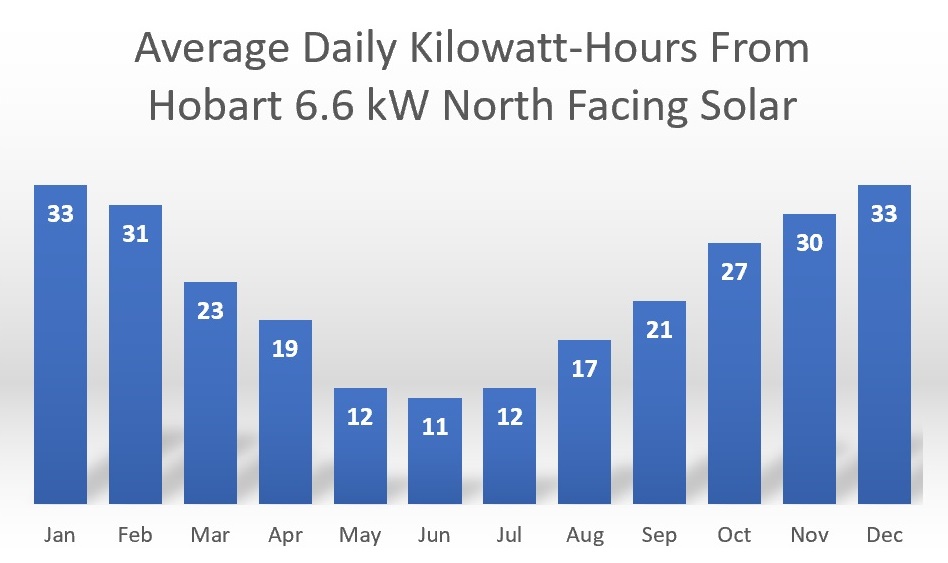
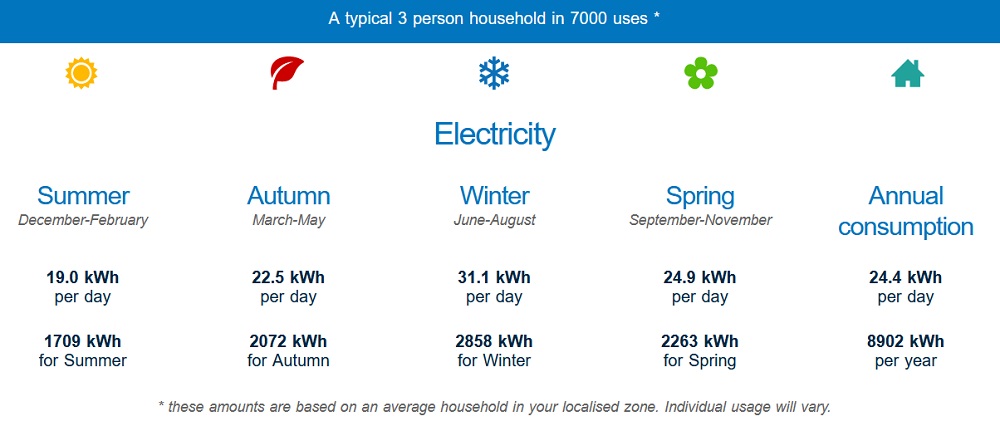
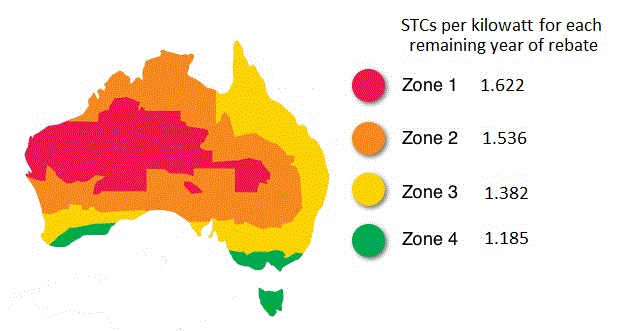
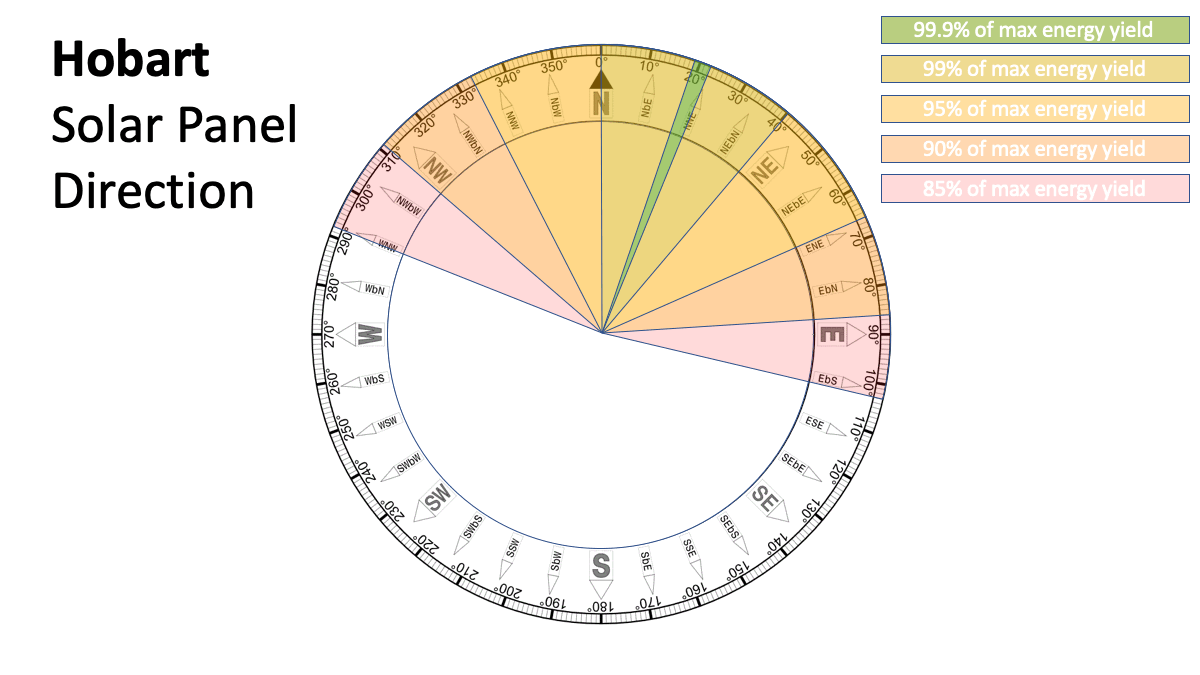
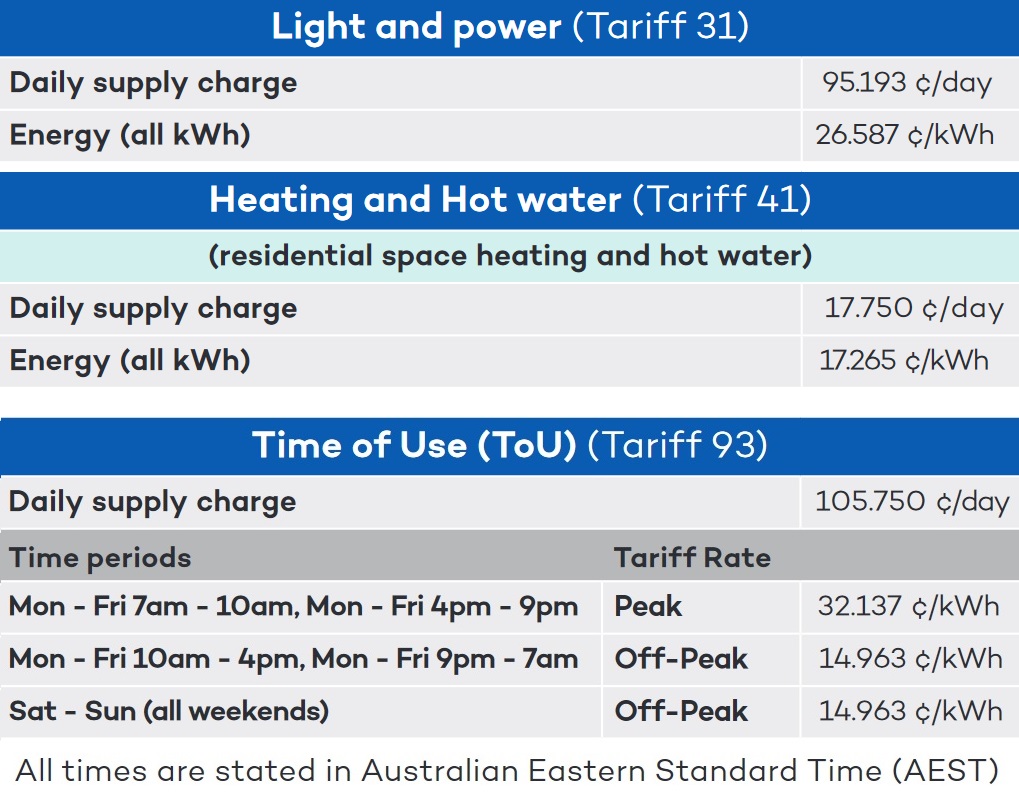
 RSS - Posts
RSS - Posts



I wonder if Taswegians are fed the same cowboy TV and online ads we get on the mainland if the lucky blighters get compulsory inspections.
The big, cheap companies do operate there – at higher prices – and the installs have to be compliant. WHich is good news for everyone. However, those systems are generally sold by call centres and it is common for the installers to rock up and realise that there are $1000’s of extra work to be done – which gets added to the ‘cheap’ price. Sometimes the homeowner will refuse – and cancel – that seems to be built into the business plan.
Very well written article Ronald. I have 10kw NE facing system and agree with all your assumptions and calculations in the article. You have done a great job bringing all the critical information together and your numbers are spot on. I think the ratio of panels to inverter capacity in Tasmania should be 1.5 and not 1.33 due to the very low power generation during the majority of the year and STC should be updated for Zone 4.
Hi Brett, my mother has a 5kW system on the north coast facing NNW that has generated just over 7200 kWh per year for last 5 years – about 15% more than quoted. It is on a steeper roof (maybe 30 degrees) but has a little shading.
Anecdotally I suspect NNW maybe better in the north, it is common (in summer anyway) for morning cloud to clear by midday.
Dear Sir.
What is the most effective house using solar, it is a caravan.
Caravans can be made now Totaly self sufficient.
You can do exactly the same with any house, flat, unit, farm or business.
Solar is NOT THE FULL ANSWER, you must simply include LED lighting in all rooms, which can be run all night from 1 battery. So the power from the solar panels is downloaded to a battery bank, then split into 12 volt power for lighting, and into a inverter for 240 volt sockets. Then with the addition of a small wind generator in the backyard, with the calculations of power that you need against the power supplied you can be totally self sufficient.
The correct term for someone from Tasmania is “Taswegian”, an inhabitant or someone who lives there.
Tasmanians usually refer to Indigenous fauna and flora. e.g., Tasmanian Devil or an Indigenous person from Tasmania.
I know it’s a bit PC but there is a clear distinction between the two and would be risk at being culturally insensitive and could imply different meanings.
Never heard of that. Pretty sure Taswegian is just slang. (I’m a Tassie girl born and bred )
Never see Taswegian used in any formal way.
“To sum up the differences, on time-of-use tariff 93 a household will pay…
10.6 cents more daily supply charge which comes to an extra $39 a year.”
When you were comparing the daily supply charges for the 93 tariff against the 31/41, you forgot to add both the 31 and 41 together.
Hence the 93 supply charge is actually 6.58c less, so an actual saving of $24/yr.
Good article, but your comment: “Unfortunately, when solar is installed households can now only have one tariff. They will be put onto time-of-use Tariff 93 by default, but they can request to be put on Tariff 31. It will no longer be possible to have Tariff 31 to power lights and appliances while using the cheaper Tariff 41 or Tariff 62 for hot water and home heating.” on which a lot of your advice is based, isn’t accurate.
We have a 5kw set of solar panels and a 3kw inverter, so that we can maximise the inverter utilisation across those parts of the year when the panels don’t spend much time at maximum power output.
Our general use tariff is 31, but our heat pump is year round on tariff 41, since we don’t turn it on for four or more months over summer. We had our installer put in a timer and switch for our hot water system, so that in summer we can run it on the tariff 31 circuit, with the timer restricting hours of operation to 10am to 3pm. When daylight savings ends we switch the hot water to the tariff 41 circuit for the heat pump and turn off the timer. That way we get the tariff 41 savings over the months when we are generating little solar power and maximise our solar self-consumption during the peak solar power generation months.
If this doesn’t match what your research turned up, I can send you a copy of our Aurora supply details, to confirm we have three tariffs on our quarterly bill, 140, 31 and 41.
Hi Lindsay
What my research showed was that when you get solar installed now, households are only allowed to have one tariff either 31 or 93. But households that had solar installed in the past were allowed to have more than one tariff and aren’t required to give them up now. So I’m guessing you’ve had your solar for a while?
Our solar connection to the grid was in December 2019.
Ronald, this current Aurora tariff information seems to confirm that 31+41 +solar feed-in tariff continues to be available.
https://www.auroraenergy.com.au/sites/default/files/2020-07/31-41-ResidentialFlatRate-AUR23720RRE3-EnergyMadeEasy.pdf
Perhaps the confusion arises because 41 is only available with 31, not with 93, so it is the choice of 93 tariff that stops 41 being available, it has nothing to do with adding solar to the mix.
Thanks Lindsay for your feedback. I completely misunderstood how tariffs and solar in Tasmania worked. I was told a solar inverter can only offset consumption of one tariff but I didn’t comprehend what I was being told and thought it meant solar homes could only have one tariff. I have been set straight and have corrected the article.
Thank you very much for your help.
Footnote 2, line 1: second “panel” should read “inverter”.
Oops! Yes, it definitely should be “inverter”. Thanks for pointing that out.
Your fears are correct. EXCEPT for people who live in Essential Energy’s area. 98% of consumers there are better off on a TOU tariff (Note the use of the correct abbreviation).
I have a large house with ducted heating, the windows are single pane. Furnishing the windows all with good curtains is technically difficult. we used 50kwh per day over winter, 20 over summer. I am working on the windows, but the house seems insulated otherwise. We have heat pump hot water. I have been trying to figure out the tarrif situation. given the large proportion of cost is from heating and it is difficult to move it out of peak times, I feel like the tariff 93 option might not be a winner for us. It is such a shame that you can only use solar to power devices on one tariff rather than two.
Any advice?
I’ve never lived in Tasmania, so take everything I say with a grain of salt, but I can say that consuming 50 kilowatt-hours a day in winter is a lot. If you use 20 kilowatt-hours a day in summer this means you are using around 30 kilowatt-hours daily for heating which will come to around $700 over winter. So you certainly may be right that tariff 93 isn’t best for you, but it will depend on the size of your solar system and how much of your electricity consumption is during the day.
If you are using electrical resistance heating the first step is to change that to using an air conditioner, as that’s far more energy efficient. Of course, not many people in Tasmania mainly use electrical resistance heating these days. I suggest investigating what can be done to insulate your home better. Unfortunately, double glazing in this country can be crazy expensive, so that may not be a good option. Some people with solar use it to heat up thermal mass which then warms the house into the evening. You can get heaters with the thermal mass built in but they often seem a bit pricey for what you get, which is basically a heat with bricks in it.
In the US you can get plastic sheeting you can put over your windows to insulate them in winter and then take it down in winter. I’ve never seen it in Australia but you can probably buy it over the internet. I don’t think it looks very good, but you can use it where people won’t see it. My American friends also taught me how to make home made insulation for windows using bubble wrap and/or polystyrene packaging, but it just looked like a fire hazard to me.
Thomas, see my separate comments above dated March 9. You can use tariffs 31 and 41 together when you have solar, with the solar offsetting tariff 31.
Ronald originally misinterpreted the advice he was given, but has since modified the article to reflect the correct position, The single tariff rule is that if you choose tariff 93 you can’t use it in combination with a second tariff. However, if your basic tariff is 31, you can use it in combination with tariff 41. This is true if you don’t have solar and is just as true if you do have solar.
What challenge?.We have had a 6.6 kw system for exactly one year now. We are located near Launceston. We are a two person household. Our supplier is Aurora.10 panels face NE and 10 panels face NW. A total of 9191 was generated (25kw per day). We have calculated savings to be in excess of $1,500.
Hi Ronald,
Re: the picture of a Japanese family under a kotatsu table with the caption, “For some reason, the traditional Japanese blankie-table is often called a “kotatsu” in Australia.”
This caption has been bothered me for at least half an hour. Perhaps this is intended as a joke and it’s flown right over my head (in which case, please forgive me for this comment), but I feel the need to point out that the correct term for the so-called “Japanese blankie-table” is, in fact, kotatsu. Kotatsu is a Japanese word and that is what these cosy heated tables are called in Japan. We call it “kotatsu” in Australia because that is what the Japanese call it. This caption has the same energy as saying “For some reason, the traditional Japanese roundy-ricey-roll is often called a “sushi” in Australia.”
I don’t normally comment on articles but I was just so startled by the misplaced confidence of this statement that I had to say something. And if it is a joke, then I must say I had a good chuckle at how silly it is. The information provided here on solar in Tasmania is otherwise excellent and informative, for which I am grateful. Have a good day!
I’m sorry, it was a joke. I’ve spent a lot of time in Japan and made some really stupid language mistakes, so I deliberately made one here in a not especially witty attempt at humour.
Would love to see this updated a bit with the changes in feed in tariffs (max is still 1st Energy, but only 10c now) and increasing cost for solar installations.
I’ve got a couple of quotes for ~10-11kW systems that are over $20,000 (2x5Kw Fronius inverters and 28 REC TwinPeak panels), and it’s making it very hard to decide it if is worth the upfront investment. Payback times are showing ~12 years, which would be just in time to spend another $5k on some new inverters.
Hi Andrew
Tasmanian solar does tend to be more expensive than in other states, I’m afraid. Also, REC Solar produces premium panels and, while good, they’re not cheap.
If you didn’t already do this, you can get quotes through us by going here:
https://www.solarquotes.com.au/quote/start/
Enter your postcode and answer the questions that come up as best you can. When it asks, “What kind of system are you after?” click the option for “A good budget system”. This is likely to get you a system with a faster payback. You’re not likely to be quoted for REC panels but any installer we refer to you will provide you with a quality, reliable solar system.
i am moving back down to tassie soon, am wondering would i be better off buying a solar system here in nsw off the local solar company who are great and supplied our 2 solar systems for the previous 2 homes with no problems and just getting it installed by a solar electrician down there, as i am a builder i can install al the required roof brackets and conduit in the roof as i build, am wondering if i am allowed to do so under tassies strict solar regulations ? or do i have to purchase from a tassie registered solar provider, i assume my nsw installation would still have to be checked under tassie law but it sounds like it would save me money to purchase a system interstate and bring it with me…
Hi Bren. I’m afraid you’re not likely to save yourself money and are likely to create headaches for yourself by buying solar hardware yourself. The problem is, buying the hardware in NSW doesn’t tackle any of the issues that make solar more expensive in Tasmania than the mainland. The equipment will still need to be transported to Tasmania, which is an expense. You’ll still have to pay a Tasmanian installer. And the system will still have to pass Tasmania’s strict inspection system.
The biggest problem you may have is finding an installer willing to use the hardware. One problem is they may be unfamiliar with it, but a larger problem is liability. Even if the equipment is all new they can’t be 100% certain it’s in good shape and since they didn’t buy it this complicates warranty issues.
As you’re building your home you can put in the conduit and make it easy to install solar and hopefully get a good deal because of that. You can make sure the roof will be able to support the solar panel array you want. But as for installing the footings, its better to leave that to the installer, as they have had lots of practice and know what the inspector will want.
thanks for your reply, but as i am taking a container of household goods down anyhow there is no cost , and i assume the panels and inverter are exactly the same as brands used in tasmania ,
warranty for panels is really not needed as they are virtually indestructible and the inverter is small and can be sent back to nsw to be replaced by post if it fails while unde 5 year r warranty so all those issues are easy to address, the only problem i can see is finding a solar electrician(or any sparky) to install it for me under tassie regulations which i do not know about.
like for instance what is the supposedly stricter testing that they have in tasmania ?
if i was to hazard a guess i would say its just needless red tape to satisfy the solar lobby group down there, as the tasmanian state has with home building ,where you have to have your home design certified by a designer and can not design it yourself and lodge a building application like here in nsw, which adds another senseless cost to already expensive house building costs along with the block levy if they still have that daft tax.
The standards are exactly the same as in the rest of the country, but Tasmania’s inspection region is strict in the sense they have one, unlike most of the country. Also, installers are pinged on minor details that often manage to be overlooked under Victoria’s inspection system.
If you decide to go ahead, I recommend finding a Tasmanian installer willing to help you out first.
cheers ..probably will as it seems like there may be a saving to be had ,and if its the installation thats regulated down there then as you said , i just need a good installer..thanks again
Thanks people, went with your recommendations, new 6kw installed for a year, just added another near new 5 kw I purchased secondhand. I’ll leave others to argue the finer points of technology and comments.
Great information, easily understood, thanks again for unbiased advise
Cheers
Jamie